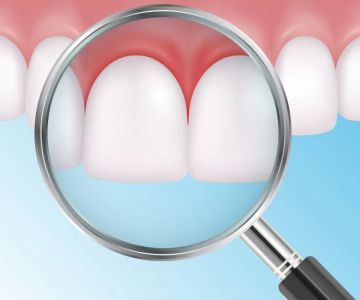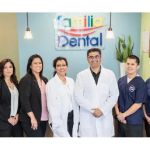Understanding the Global Burden of Oral Disease
Oral diseases represent one of the most common health problems worldwide, affecting people across all ages and regions. According to the World Health Organization (WHO), nearly 3.5 billion people suffer from oral conditions globally. This staggering figure highlights that oral health is a significant public health challenge affecting a substantial portion of the global population.
The term “oral disease” encompasses a variety of conditions including dental caries (tooth decay), periodontal (gum) diseases, oral cancers, and developmental anomalies such as cleft lip and palate. Among these, dental caries and periodontal diseases are the most prevalent, impacting billions worldwide and often leading to pain, tooth loss, and diminished quality of life.
1. The Prevalence of Dental Caries Across the Globe
Dental caries is the most widespread chronic disease affecting humans. It can occur in both children and adults, often starting early in childhood. Data reveals that over 2.3 billion people suffer from untreated dental caries in permanent teeth, while approximately 530 million children have untreated caries in their primary (baby) teeth.
This extensive prevalence is driven by factors such as poor oral hygiene, high sugar consumption, limited access to dental care, and lack of fluoridated water. In many low- and middle-income countries, untreated dental caries remain a huge burden due to insufficient oral health infrastructure.
For instance, a young girl from a rural community in South America was unable to attend school regularly because of severe toothache caused by untreated cavities. Stories like hers are unfortunately common and emphasize the importance of early prevention and access to care.
2. Periodontal Disease: A Silent Epidemic
Periodontal diseases, which include gingivitis and periodontitis, affect nearly 10% of the global population in their severe forms. These diseases attack the gums and supporting structures of the teeth, often progressing painlessly until significant damage occurs, such as tooth loss or systemic health complications.
Studies show that periodontitis is associated with increased risk for heart disease, diabetes complications, and adverse pregnancy outcomes. The interplay between oral health and overall health has gained attention, highlighting the necessity of addressing gum disease on a global scale.
A middle-aged man in the United States, despite maintaining regular dental visits, developed advanced gum disease due to smoking and undiagnosed diabetes. His case illustrates how lifestyle and systemic conditions can worsen oral disease risk even with good hygiene.
3. Oral Cancer and Its Global Impact
Oral cancer accounts for significant morbidity and mortality worldwide, with over 350,000 new cases diagnosed each year. It is often linked to tobacco use, alcohol consumption, and human papillomavirus (HPV) infections. Early detection is critical but frequently missed, leading to poor prognosis.
Oral cancer disproportionately affects populations with limited healthcare access, and survival rates vary widely depending on when the disease is diagnosed. Awareness campaigns and regular oral screenings are vital to reducing the global burden of this disease.
4. Socioeconomic and Geographic Disparities in Oral Disease
Oral diseases disproportionately impact vulnerable populations, including those living in poverty, rural areas, and developing countries. Lack of education about oral hygiene, poor nutrition, and limited access to preventive and therapeutic dental services exacerbate the problem.
For example, Indigenous communities in Australia and Native American populations in the United States experience significantly higher rates of oral diseases compared to national averages. This disparity underscores the need for culturally sensitive and accessible dental health programs tailored to at-risk groups.
5. Preventive Measures and Public Health Strategies
Addressing the global oral disease burden requires comprehensive preventive strategies. Fluoridation of water supplies, promotion of good oral hygiene practices, reduction in sugar intake, and increasing access to affordable dental care are cornerstones of public health initiatives.
Successful programs in countries like Finland and Singapore demonstrate how community-wide fluoride use combined with school-based education can drastically reduce cavities and improve oral health outcomes. Expanding such efforts worldwide is critical to controlling oral diseases.
6. The Role of Dental Professionals and Technology in Combating Oral Disease
Dental professionals play an essential role in early diagnosis, treatment, and education. Advances in dental technology such as digital imaging, laser therapy, and minimally invasive treatments improve patient outcomes and accessibility.
Tele-dentistry has emerged as a promising solution to reach underserved populations by enabling remote consultations and follow-ups, particularly during times like the COVID-19 pandemic. These innovations help bridge gaps in oral healthcare delivery across the globe.







 Westgate Dental Arts3.0 (2 review)
Westgate Dental Arts3.0 (2 review) Coventry Family Dental4.0 (247 review)
Coventry Family Dental4.0 (247 review) Familia Dental3.0 (1028 review)
Familia Dental3.0 (1028 review) Dr. Daniel S. Fife, DDS4.0 (31 review)
Dr. Daniel S. Fife, DDS4.0 (31 review) Dentistry At Suburban Square: Michael I. Wollock, DMD4.0 (1228 review)
Dentistry At Suburban Square: Michael I. Wollock, DMD4.0 (1228 review) Comfort Care Dental4.0 (1156 review)
Comfort Care Dental4.0 (1156 review) The Importance of Oral Health Education During Pregnancy for a Healthy Pregnancy
The Importance of Oral Health Education During Pregnancy for a Healthy Pregnancy Why Skipping Dental Checkups Can Lead to Bigger Oral Health Problems
Why Skipping Dental Checkups Can Lead to Bigger Oral Health Problems Best Tips for Brushing Your Teeth Properly for Healthy Gums: Essential Techniques for Oral Health
Best Tips for Brushing Your Teeth Properly for Healthy Gums: Essential Techniques for Oral Health Advantages of Porcelain Dental Restorations
Advantages of Porcelain Dental Restorations How Can Diabetes Cause Tooth and Gum Problems? Preventing and Managing Oral Health Issues
How Can Diabetes Cause Tooth and Gum Problems? Preventing and Managing Oral Health Issues Healthy Habits for Promoting Good Oral Health and Hygiene: Tips for a Healthy Smile
Healthy Habits for Promoting Good Oral Health and Hygiene: Tips for a Healthy Smile